The 2013 Constitution affirms: “The state economy plays a leading role.” This is a strategic political orientation, reflecting the choice of an economic development model with Vietnamese identity. However, in practice, the perception of this leading role is inconsistent and unclear, leading to many contradictory interpretations and applications.
Therefore, when the Party and the State – especially under the direction of General Secretary To Lam – are requesting the development of a Project to innovate and improve the efficiency of the state economy , re-establishing a correct and clear perception of the leading role of the state economy becomes a prerequisite.
Current cognitive distortions
In practice, the perception of the leading role of the state economy is still quite inadequate, even inconsistent. One of the most obvious manifestations is the identification of the “leading” role with the idea of covering the market, leading to the view that the state economy must be widely present in most key areas - including areas where the private sector is completely capable of undertaking more effectively. This understanding unconsciously leads to the tendency of unnecessary administrative intervention, reducing the dynamism and creativity of other economic components.
Another misconception is the notion that “dominance” means having priority access to resources – from budget capital, land to mechanisms and policies. This can easily create a distorted environment in resource allocation, forming a mentality of dependence or privileges and benefits for a part of state-owned enterprises – which can not only distort the market but also affect the efficiency of public asset use.
The issue is not the comparison between economic sectors, but the efficiency in organizing, operating and allocating development resources of economic components. If the leading role is properly understood as the capacity to effectively use public assets to orient strategies, expand development space and lead the transformation of growth models, then the state economy will truly become a strong driving force - especially in fundamental, difficult or long-term investment-requiring areas.
As Prime Minister Pham Minh Chinh has repeatedly emphasized: Developing a socialist-oriented market economy must “respect market rules, unleash all resources and create a fair playing field among economic sectors”. This is a strategic requirement to unleash development potential, improve productivity and attract high-quality investment.
To realize that goal, the leading role of the state economy needs to be re-understood scientifically and correctly – that is, the ability to effectively use public resources to lead a new growth model, open up market spaces that the private sector has not been able to access, and create a truly transparent, equal, and effective “playing field” for all.
Clarifying the nature of the leading role in the model of a constructive state
To properly and effectively implement the leading role of the state economy, it is necessary to first clearly understand the nature of this concept in the conditions of a socialist-oriented market economy and a developmental state model.
A fundamental starting point is: the state economy plays a leading role first of all because the State holds the majority of national assets - including capital, land, resources, infrastructure, shares in enterprises and other property rights. This is a block of assets owned by the entire people, the State is authorized by the people to manage. However, it is necessary to make a clear distinction: owning public assets is not synonymous with the state economy. Only when those assets are organized and exploited according to market mechanisms and accept business risks, can a true state economic sector be created.
The mechanism for putting public assets into production and business – also known as “transforming public assets into economic activities” – requires a modern and transparent institutional system. This can take place in three basic forms:
1. Hand over assets to state-owned enterprises for direct exploitation, on the condition that they comply with market standards, disclose information, are audited and governed as a competitive economic organization.
2. Entrust assets to public wealth funds – similar to the Temasek model (Singapore) – to invest and make profits from national assets through the capital market, financial market or areas with reasonable rates of return.
3. Lease, franchise, public-private partnership (PPP) or other forms of contractual exploitation, ensuring a sustainable revenue stream for the budget, without the need to directly operate the business.
Thus, only the public assets that are exploited for profit, according to market principles and accepting risks, constitute the state economic sector. On the contrary, the assets used for public welfare purposes such as roads, schools, hospitals, national security, etc. belong to the public service sector and should not be identified with the state economy.
On that basis, the leading role of the state economy needs to be viewed from three modern aspects:
First, the key to economic strategy and security. The state economy holds key sectors such as energy, finance and banking, essential infrastructure, defense industry, national data, etc. These sectors are not only important economically, but also linked to national sovereignty and defense capabilities. When the market fluctuates or is in crisis, this is the force that “keeps the rhythm” – ensuring system safety and national recovery capabilities.
Second, the leading role in leading and creating development. The state economy needs to pioneer in fundamental or high-risk areas that the private sector is not ready to participate in – such as core technology, renewable energy, digital infrastructure, green transformation, artificial intelligence, etc. When the market is mature enough, this role will transform into cooperation and diffusion – creating a push for the private sector to break through.
Third, the key role in building a healthy market environment and fair competition. As the economic force of the entire people, the state economy needs to be exemplary in transparent governance, comply with market rules and take the lead in transforming digital governance, ESG (Environment - Society - Governance) and corporate culture. The key role lies in the ability to establish market trust and standardize business ethics. The state economy must take the lead, using national assets as a driving force for innovation, paving the way for the future.
A new awareness is needed to properly implement the leading role.
After establishing the three core aspects of the leading role – strategy, leadership and environmental creation – the prerequisite for realizing that role is a new, sharp and modern awareness, aiming to transform that spirit into institutional design, governance mechanisms and effective implementation organization. This is a breakthrough so that the leading role does not only exist in documents, but actually operates vividly in the practice of national development.
Firstly, it is necessary to shift from the mindset of “enterprise management” to “national asset management”. The State needs to build a “national asset balance sheet”, digitize all public assets, evaluate, classify and design effective exploitation strategies.
Second, the leading role must be clearly separated from the state management function. Separating ownership, management and supervision is a fundamental solution to minimize conflicts of interest and increase operational efficiency.
Third, it is necessary to establish reasonable boundaries between the public and private sectors. The public economy needs to focus on areas of market failure, high risk or requiring long-term investment, to lead, pave the way and spread development. Determining the boundaries correctly will create a harmonious economic order where economic sectors develop together instead of destroying each other.
Fourth, we must attach a leading role to the mission of renewing the growth model. As General Secretary To Lam has directed, “We cannot let the country fall behind. Transforming the growth model must be based on innovation and artificial intelligence.” This is not just a slogan, but a strategic orientation of the times. Accordingly, the state economy needs to take the lead in investing in new technologies, green industry, renewable energy, digital infrastructure, AI, semiconductors and institutional innovation – areas where the private sector is still hesitant or not strong enough.
Fifth, it is necessary to measure the leading role not only by the size of assets or the proportion of GDP, but also by the quality of intervention and social efficiency.
The key is not to hold too much, but to lead well, create macroeconomic stability, balance development and shape new trends. This is the only way for the state economy to become a true “pillar” in the socialist-oriented market economic system – where efficiency goes hand in hand with equity, and growth goes hand in hand with sustainability.
General Secretary To Lam has directed the development of a Project to innovate and improve the efficiency of state economic operations - as a central task in the current national institutional reform.
If repositioned in a correct and modern way – as a strategic capacity to protect economic sovereignty, lead a new growth model and create a healthy competitive market – the leading role of the state economy will become an important driving force to help the country confidently step firmly into the era of industrialization 4.0, digital transformation and green development.
Dr. Nguyen Si Dung
Source: https://baochinhphu.vn/nhan-thuc-ve-vai-tro-chu-dao-cua-kinh-te-nha-nuoc-102250722075015496.htm



![[Photo] Students of Binh Minh Primary School enjoy the full moon festival, receiving the joys of childhood](https://vphoto.vietnam.vn/thumb/1200x675/vietnam/resource/IMAGE/2025/10/3/8cf8abef22fe4471be400a818912cb85)
![[Photo] Prime Minister Pham Minh Chinh chairs meeting to deploy overcoming consequences of storm No. 10](https://vphoto.vietnam.vn/thumb/1200x675/vietnam/resource/IMAGE/2025/10/3/544f420dcc844463898fcbef46247d16)




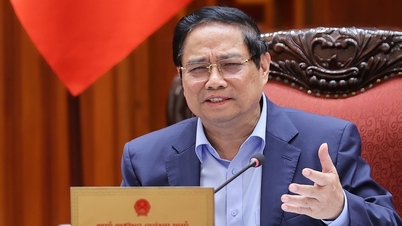







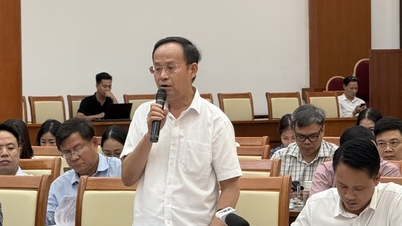




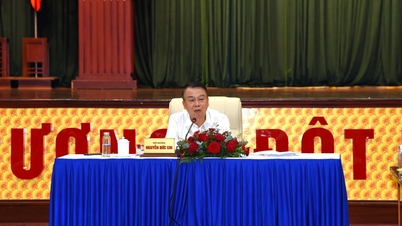

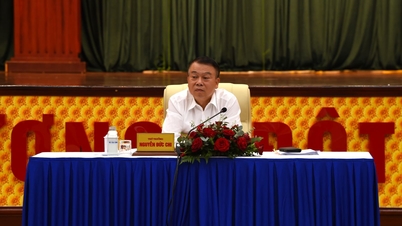




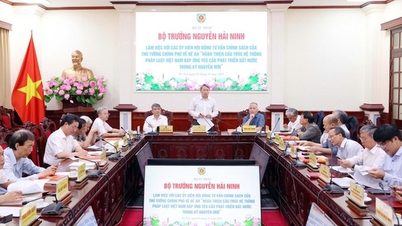


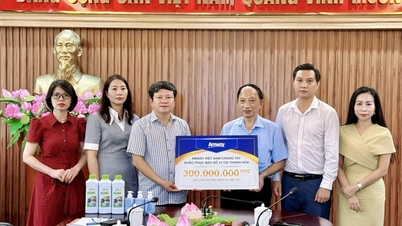
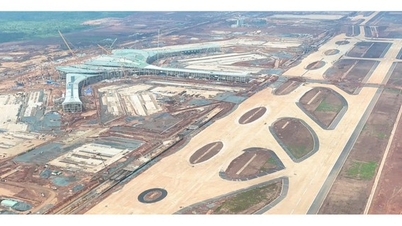






















































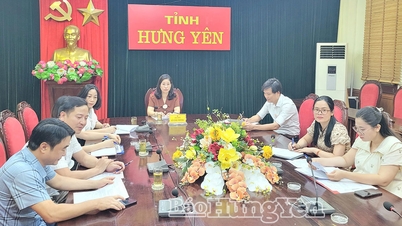














Comment (0)